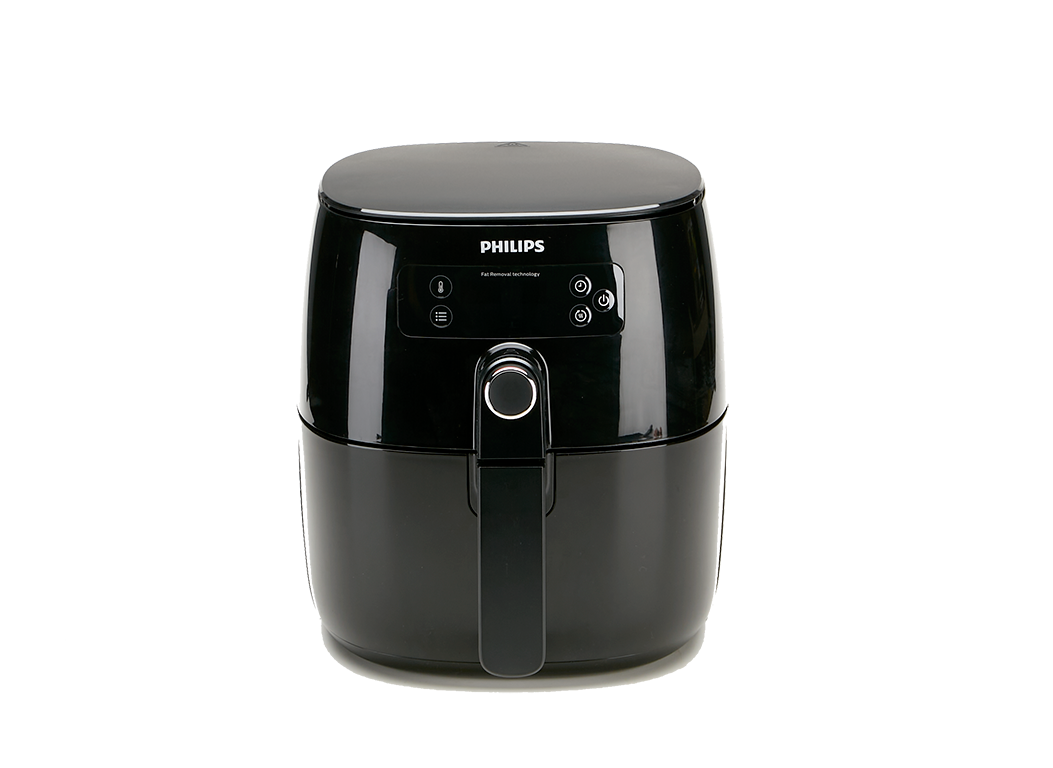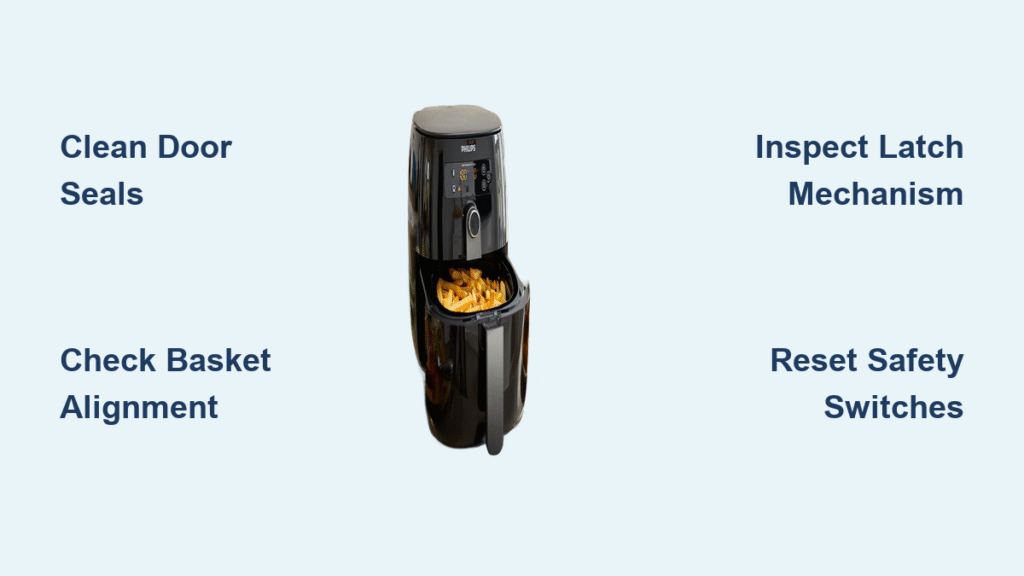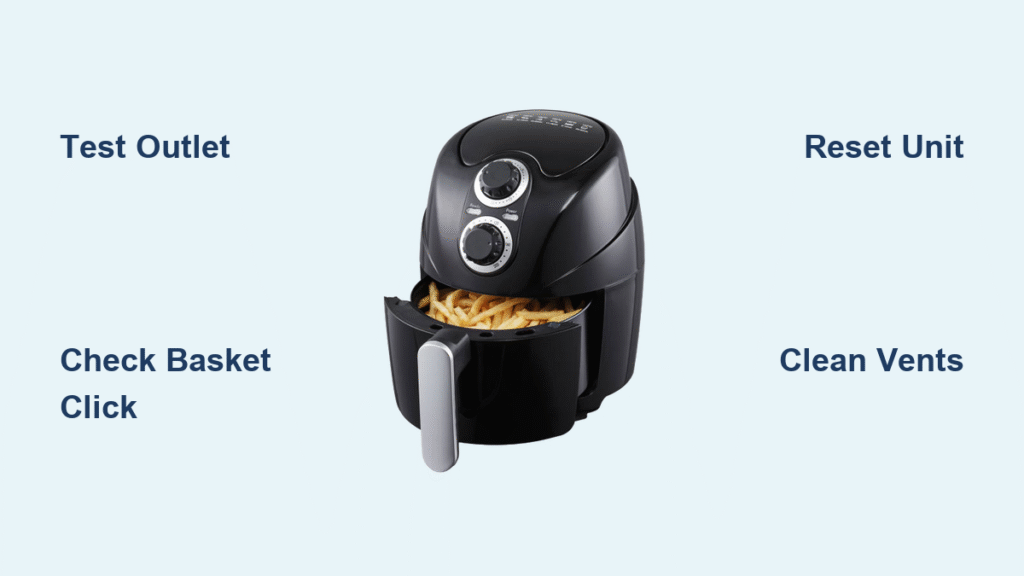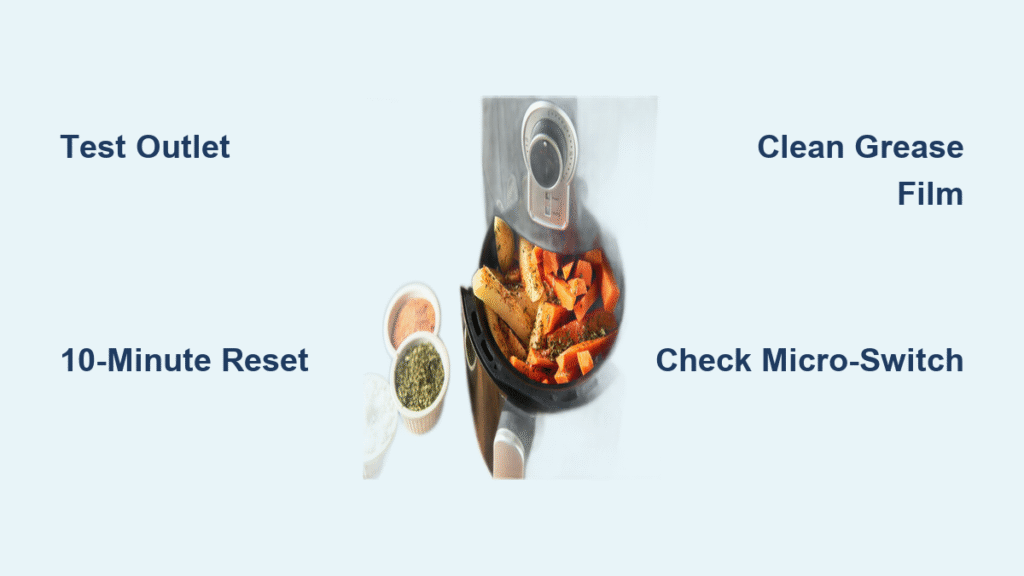You’ve loaded your ingredients, set the timer, and are ready to enjoy a quick, healthy meal—only to discover your Philips air fryer door refuses to close properly. This frustrating issue affects countless users who rely on their air fryers for convenient cooking. When your air fryer won’t seal completely, you’re not just dealing with inconvenience; you’re facing potential safety concerns and interrupted meal preparation that can turn a simple dinner into a kitchen headache.
The good news is that many door closure problems have straightforward solutions you can address yourself. Unlike complex appliance repairs that require professional help, most air fryer door issues stem from simple causes that can be resolved with basic troubleshooting. This guide provides practical steps to diagnose and fix your Philips air fryer door problem, helping you get back to cooking without unnecessary expense or delay.
Quick Diagnosis: Why Your Air Fryer Door Stays Open
Before attempting repairs, identifying the specific cause of your door closure problem saves time and prevents unnecessary disassembly. Air fryer doors typically fail to close properly for several common reasons, each requiring different solutions. Understanding these potential issues helps you target your troubleshooting efforts efficiently.
Visual Inspection Checklist
Begin with a simple visual assessment before proceeding to more involved solutions. In many cases, a quick inspection reveals the problem immediately. Check these critical areas:
- Obstructions around the door seal: Food particles or grease buildup can prevent proper closure
- Basket positioning: The cooking basket must be fully inserted and properly aligned
- Door mechanism: Look for visible damage to hinges or latching components
- Cooking chamber interior: Ensure no food debris is lodged where the door meets the main unit
Run your fingers along the door seal and the corresponding surface on the main unit. Any irregularities, debris, or damage you feel could be preventing a complete seal.
Common Obstruction Points
Most closure issues stem from three specific areas where debris commonly accumulates:
- Door seal grooves: Crumbs and food particles can wedge into the rubber seal channels
- Basket insertion tracks: Debris in these channels prevents the basket from seating properly
- Door latch mechanism: Grease and food residue can interfere with the latching action
Clean Door Seals Thoroughly

Accumulated grease and food particles represent one of the most frequent causes of door closure problems. Over time, residue builds up in the door seal grooves, creating gaps that prevent proper sealing. Regular cleaning of these components maintains optimal functionality and prevents many common issues.
Step-by-Step Seal Cleaning Process
- Unplug the appliance and allow it to cool completely before beginning
- Remove the cooking basket and set it aside for separate cleaning
- Prepare cleaning solution: Mix warm water with a small amount of mild dish soap
- Dampen a soft cloth in the solution, ensuring it’s not dripping wet
- Wipe the door seal thoroughly, paying special attention to grooves and corners
- Use cotton swabs for hard-to-reach areas where debris tends to accumulate
- Rinse with a clean damp cloth to remove any soap residue
- Allow components to air dry completely before attempting to close the door
Pro tip: For stubborn grease buildup, a vinegar-water solution (equal parts) can be more effective than soap alone, but always rinse thoroughly afterward.
Seal Condition Assessment
After cleaning, examine the door seal closely for signs of damage that would prevent proper closure:
- Visible cracks or tears in the rubber material
- Areas that feel stiff or brittle to the touch
- Sections that appear permanently deformed
- Missing portions of the seal material
If you notice any of these issues, the seal likely needs replacement to restore proper functionality.
Fix Bent or Broken Door Latches
The door latch mechanism plays a critical role in securing your air fryer during operation. Damage to this component often prevents proper closure and can create safety concerns during cooking. Understanding how to assess and address latch problems is essential for restoring full functionality.
Latch Inspection Method
With the appliance unplugged, gently attempt to close the door while observing the latch mechanism. A properly functioning latch should:
- Engage smoothly with its corresponding catch point
- Hold securely without wobbling or shifting
- Release easily when the opening mechanism is activated
- Show no visible damage such as cracks or deformations
Pay particular attention to how the latch moves through its range of motion—any resistance or unusual sounds may indicate underlying problems.
Latch Repair Considerations
For minor latch issues, cleaning and realignment may restore proper function. More significant damage typically requires replacement. If you attempt any repairs:
- Never operate the air fryer with a compromised latch mechanism
- Avoid using excessive force that could cause further damage
- Document the disassembly process with photos for easier reassembly
- Consider consulting official service documentation before proceeding
Align Basket and Drawer Properly

Misalignment between the cooking basket and main unit frequently prevents proper door closure. Even slight deviations can create pressure points that stop the door from sealing completely. Ensuring proper basket positioning often resolves seemingly complex closure issues.
Correct Basket Positioning
- Remove the basket completely from the main unit
- Clean the insertion tracks with a damp cloth to remove debris
- Check for smooth movement: The basket should slide in and out without resistance
- Reinsert the basket: Push firmly until you feel it seat completely
- Verify alignment: The basket should sit evenly without tilting
Track Maintenance
Regular maintenance of the basket insertion tracks prevents many alignment issues:
- Clean tracks after each use to prevent buildup
- Use soft brushes for hard-to-reach areas
- Avoid abrasive cleaning tools that could damage track surfaces
- Check for physical damage to tracks that might require professional repair
Reset Air Fryer Safety Mechanisms
Modern air fryers incorporate safety features that prevent operation when the door isn’t properly closed. Occasionally, these mechanisms can become temporarily stuck or malfunction, creating false “door open” errors even when the door appears closed.
Reset Procedure
- Unplug the appliance for at least 30 seconds
- Clean around safety switches with compressed air
- Manually activate switches several times to ensure free movement
- Reconnect power and test door closure
This simple reset process often resolves electronic issues that mimic mechanical closure problems.
Professional Repair vs. Replacement Decision

When basic troubleshooting fails to resolve your closure issue, determining whether to pursue professional repair or replace the unit requires careful consideration. Several factors influence this decision:
- Appliance age: Newer units typically warrant repair attempts
- Problem complexity: Multiple component failures may indicate broader issues
- Cost comparison: Repair expenses versus replacement value
- Warranty status: Coverage may make professional service cost-effective
Consulting authorized service providers helps determine the most economical solution for your specific situation.
Prevent Future Closure Problems
Implementing simple maintenance practices significantly reduces the likelihood of recurring door closure issues. Prevention takes minimal effort but saves considerable frustration when problems are avoided altogether.
Daily Maintenance Routine
- Wipe door seals with a damp cloth after each use
- Ensure complete removal of food debris from all components
- Verify proper closure before starting cooking cycles
- Store with the door slightly ajar to maintain seal flexibility
Weekly Deep Cleaning
- Perform thorough cleaning of all components
- Inspect seals and mechanisms for early signs of wear
- Check alignment and functionality of moving parts
- Address minor issues before they become major problems
Emergency Workarounds (Temporary)
In situations where immediate cooking is essential and closure problems persist, temporary solutions exist—but with important caveats. These approaches should only be used sparingly and with extreme caution:
- Never leave the appliance unattended during operation
- Monitor constantly for safety issues
- Use only for very short cooking cycles
- Discontinue immediately if any safety concerns arise
Critical warning: These are not permanent solutions and carry inherent risks. Prioritize proper repair over continued use of compromised equipment.
When your Philips air fryer door won’t close properly, systematic troubleshooting often reveals simple solutions that restore full functionality. Start with basic cleaning and inspection—these steps resolve most closure issues without specialized tools or expertise. For persistent problems, professional service may be necessary to address underlying mechanical issues.
Remember that forcing a door closed when it doesn’t naturally seal can cause additional damage and create safety hazards. Always prioritize proper function over convenience, and consult authorized service providers when in doubt about repairs. Regular maintenance prevents most closure issues, ensuring your air fryer continues delivering convenient, healthy meals for years to come.





